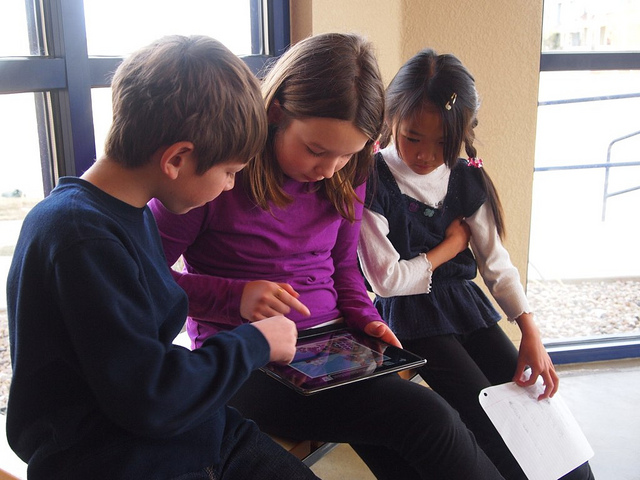Racism in Europe is once again a hot topic. There were a total of 1,274 racist incidents reported at schools in Scotland between 2011 and 2012. While in the wider UK data from 90 areas shows 87,915 cases of racist bullying, including name calling and physical abuse between 2007 and 2011. In 2009 Sweden was accused by its own United Nations Association of failing to abide by a number of UN conventions including racist propaganda appearing in its schools. The fluctuation in racist incidents continues and nation perceptions often steer well clear of the mark.
Rapid change and reclassification are inextricably intertwined with financial, environmental, social, scientific, technological, communicative, media and educational factors. They have consequences that can be both negative and positive their effect towards society. In addition, a result of such intense changes is the continuous movement of individuals and whole cohorts that create more complex and mixed societies. Various problems may arise as people and even political systems are not yet ready to accept such multicultural co-existence. Education is an essential part of overcoming obstacles that arise due to immigration, racism, and fear of the unknown. Together with guidance and counseling they can contribute to the extinction of racist incidents in both schools and society. As Umberto Eco said: “the man of the twenty-first century will be more and more the man of mixed race rich in identities and belonging to multiple groups.”

Apart from change at the national or local level, the growth of the poverty gap and the aggressive policies of developed and powerful countries towards underdeveloped countries often lead to mass human movement, which requires direct assimilation and acceptance, especially among younger generations. This kind of abrupt developments, transmission of knowledge, and the rationalization of modern life, the close relationships among nations and the creation of multicultural societies should aim to promote reconciliation and collaboration of countries. Under these circumstances it is paradoxical that instead of mutual understanding and acceptance, we still detect phenomena of racism and discrimination. It is useful to offer the definition of racism according to Hoyt C Jr “the belief that all members of purported race possess characteristics, abilities, or qualities specific to that race, especially so as to distinguish it as inferior or superior to another race or other races. Racism is a particular form of prejudice defined by preconceived erroneous beliefs about race and members of racial groups.”
Racism extends to discrimination, prejudice, violence and bullying. Unfortunately, the phenomenon of racism has the ability to spread and influence those who come into contact with it. As a consequence, racism in schools is an issue that governments, educational institutions and educators have a duty to deal with and overcome.
When it comes to school environments, racism can appear due to aggression and alienation due to ethical, cultural or racial background. It also acts as a strong draw to those students marginalized for other reasons who seek to establish there identity among a larger group. Racism and racist violence can be a common phenomenon among teenagers, especially in European countries with growing minority populations. Symptoms of racism are most readily apparent in these multicultural societies such as Denmark. Children tend to be victimized, become isolated and develop feelings of hopeless and helpless. The consequences can be devastating, as victimized children do not want to attend school, fall behind academically and get lower results.
Often accompanying racism is social exclusion, which can be observed together in individual cases or together within schools. The relationship between nations and the formation of transnational communities like the European Union declare the reconciliation of peoples’ or at least their cooperation as a central aim. Anup Shah notes that “Racism and discrimination have been used as powerful weapons encouraging fear or hatred of other in times of conflict and war, and even during economic downturn.” It is a different and paradoxical situation therefore that occurs in peacetime, when countries are trying to increase international cooperation and develop more porous borders.
Racism has the ability to spread and influence those who come into contact with it. As a consequence racism in schools is an issue that governments, educational institutions and educators have a duty to deal with and overcome.
When examining the causes of racism, which are many, varied and are often obscure, it is tempting to cite a lack of education and an accompanying spiritual poverty as the main problem. While this may be the main part of the problem and is certainly a significant part of the solution, it is important not to forget that it is nevertheless an oversimplification. After all the Wansee Conference, at which the scope and control of the final solution was coordinated, was attended by fifteen officials, eight of whom were educated up to PhD level. Education can and should be tailored to promotion of equity, justice, peace and mutual respect. A low educational level may lead to the limitation of the horizons and can inactivate certain aspects of human thinking, so as to be easily manipulated and uncritically adopt stereotypes. Then, instead of peaceful co-existence conflict thrives, whilst xenophobia and violence take place.

The causes of racism in schools are not wholly different to racism outside of the school. Chauvanism, phobias or feeling inferior may lead to serious psychological damage and psychosis, which can then lead to aggressive behavior, isolation, anger and other emotional or behavioral disorders. What also should be kept in mind is that racism is a phenomenon that occurs both in developed and developing countries. This means information and knowledge should be spread all over the world to finally understand that we are all the same. Scientific findings support the view that quantitative differences between racial groups are dwarfed by the differences between individuals within a race. The curriculum should include such teaching methods that are able to flexibly respond to varied challenges that present. One young teacher from the UK used the concept of eye colour to model racial discrimination to her class, having each group awarded unfair privileges on subsequent days. The children reported a real sense of feeling both unfairly treated as well as a sense indifference to the victims when given the upper hand.
Preventing incidents of racism calls for an organized way to refute racist behaviors among students and teachers. Firstly to be able to recognize and discard such behaviors, and then the competent authorities can use carefully planned educational interventions to overcome it. For example using a system of reporting and recording incidents and monitoring post intervention. Multicultural guidance and counseling for both the victim and perpetrators could be a key element to overcoming such issues in a democratic and liberal way. According to James Banks, “A fundamental premise of a democratic society is that citizens will participate in the governing of the nation and that the nation-state will reflect the hopes, dreams and possibilities of its people. People are not born democrats.” This education aimed, at building responsible democrats can start from elementary schools. At present many countries like the UK, Bulgaria and Spain have secondary school classes in Citizenship but only a cross-curricular one in primary schools. Some have no statutory obligations to provide even this. One newly qualified science teacher in the UK shared his experience:
“The children in schools don’t seem to get significant chances to discuss racism in an open and free environment. There is plenty of bland repetition of the mantra ‘racism is bad’, but little chance to model it and truly understand what it is. They are fascinated by racial differences and the associated issues and love discussing biological reasons for skin colour or facial structure. I think it really brings home to them the normality of different appearances and puts unpleasant incidents into context as misguided social expressions of discontent.”
The goals of multicultural education should be to help people get a better understanding of themselves, to provide cultural, ethnic and language alternatives, to reduce discrimination, to contribute to the more balanced functioning of cultural communities. The basic initial motive should be that no child should be left behind. Integrity and transparency should be the goal for every educator. The significance of this issue is put into poetic language by John E Wade, a school superintendent in New York who said “No longer can we afford to ignore or minimize the danger that will inevitably follow if prejudice is allowed to spread unchecked. Enemies of democracy at home and abroad neither minimize nor ignore it, but utilize every opportunity to widen the gap that exists between the racial, religious, and national groups.”
Cover photo: apdk, CC BY-NC-ND 2.0







